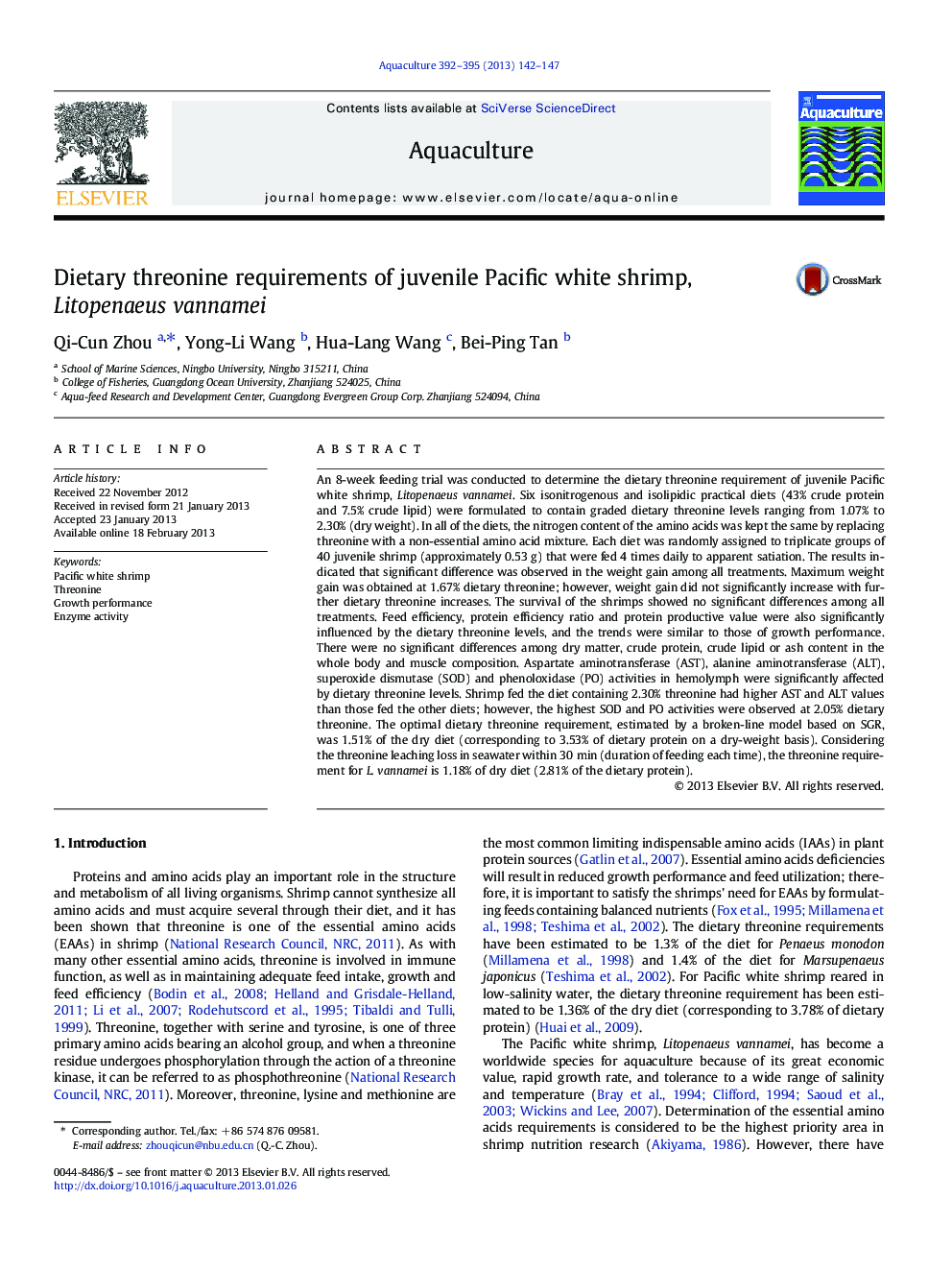| کد مقاله | کد نشریه | سال انتشار | مقاله انگلیسی | نسخه تمام متن |
|---|---|---|---|---|
| 2422186 | 1552875 | 2013 | 6 صفحه PDF | دانلود رایگان |

An 8-week feeding trial was conducted to determine the dietary threonine requirement of juvenile Pacific white shrimp, Litopenaeus vannamei. Six isonitrogenous and isolipidic practical diets (43% crude protein and 7.5% crude lipid) were formulated to contain graded dietary threonine levels ranging from 1.07% to 2.30% (dry weight). In all of the diets, the nitrogen content of the amino acids was kept the same by replacing threonine with a non-essential amino acid mixture. Each diet was randomly assigned to triplicate groups of 40 juvenile shrimp (approximately 0.53 g) that were fed 4 times daily to apparent satiation. The results indicated that significant difference was observed in the weight gain among all treatments. Maximum weight gain was obtained at 1.67% dietary threonine; however, weight gain did not significantly increase with further dietary threonine increases. The survival of the shrimps showed no significant differences among all treatments. Feed efficiency, protein efficiency ratio and protein productive value were also significantly influenced by the dietary threonine levels, and the trends were similar to those of growth performance. There were no significant differences among dry matter, crude protein, crude lipid or ash content in the whole body and muscle composition. Aspartate aminotransferase (AST), alanine aminotransferase (ALT), superoxide dismutase (SOD) and phenoloxidase (PO) activities in hemolymph were significantly affected by dietary threonine levels. Shrimp fed the diet containing 2.30% threonine had higher AST and ALT values than those fed the other diets; however, the highest SOD and PO activities were observed at 2.05% dietary threonine. The optimal dietary threonine requirement, estimated by a broken-line model based on SGR, was 1.51% of the dry diet (corresponding to 3.53% of dietary protein on a dry-weight basis). Considering the threonine leaching loss in seawater within 30 min (duration of feeding each time), the threonine requirement for L. vannamei is 1.18% of dry diet (2.81% of the dietary protein).
► Dietary threonine levels have positive effects on growth and feed utilization.
► Dietary threonine levels significantly influenced AST, ALT, SOD, PO activities.
► The optimal dietary threonine requirement is 1.51% of dry diet based on SGR.
Journal: Aquaculture - Volumes 392–395, 10 May 2013, Pages 142–147